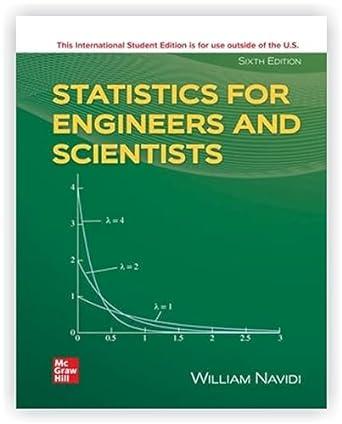Refer to Exercise 18. Which of the following is the best conclusion to be drawn from the
Question:
Refer to Exercise 18. Which of the following is the best conclusion to be drawn from the results?
i. Higher exposure to ozone is associated with lower values of FEV1, but the value of the correlation shows that the association is weak.
ii. Higher exposure to ozone is associated with lower values of FEV1, and the value of the correlation shows that the association is strong.
iii. Higher exposure to ozone is associated with higher values of FEV1, but the value of the correlation shows that the association is weak.
iv. Higher exposure to ozone is associated with higher values of FEV1, and the value of the correlation shows that the association is strong.
Data From Exercise 18:
18. Refer to the data set lung.csv.
a. Compute the least-squares line for predicting FEV1 from ozone exposure.
b. Let \(\beta_{1}\) denote the change in FEV1 associated with an increase of \(1 \mathrm{ppb}\) in ozone level. Test the hypothesis \(H_{0}: \beta_{1} \geq 0\) versus \(H_{1}: \beta_{1}c. Compute the correlation between ozone and FEV1.
Lung Data Set:
Forced expiratory volume (FEV) is a measure of lung function which is obtained by having a person fill their lungs with as much air as possible, then blowing as hard as they can into a tube. The volume of air expelled in one second is known as FEV1.
In a study to assess the effect of various factors on the lung capacity of children and adolescents, students in fourth through twelfth grade had their FEV1 measured, along with other variables that might affect the value of FEV1. In particular, levels of exposure to various air pollutants were measured. These were ozone, PM10 (concentration of particles \(10 \mu \mathrm{m}\) or less in diameter), and \(\mathrm{NO}_{2}\). Following is a list of the variables in this data set:


Step by Step Answer:






